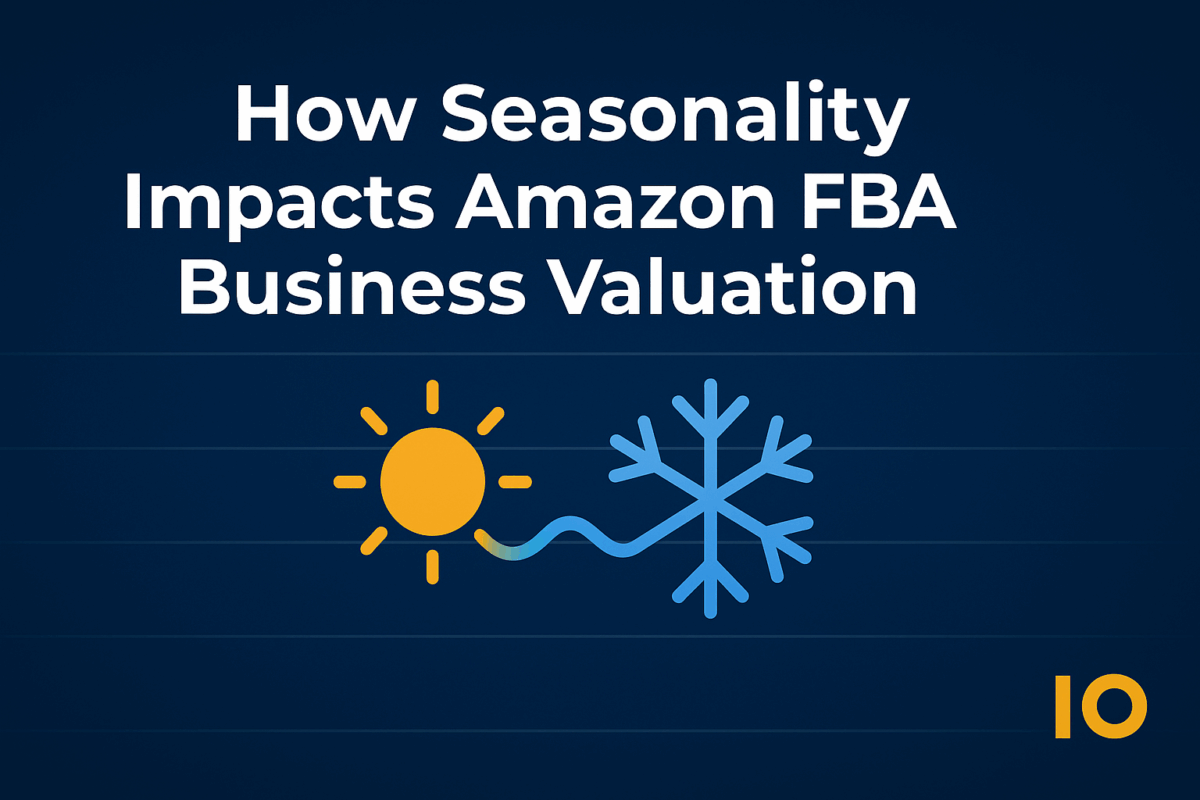Seasonality is a defining trait of many Amazon FBA businesses. Whether it’s summer products or Q4 holiday surges, predictable demand swings affect how a business performs – and how it’s valued.
Buyers and sellers need to understand how to time deals, assess performance, and manage expectations around seasonal trends.
For Sellers: Timing the Exit
1. Before the Peak:
Listing your business before a busy season can be attractive – buyers get the upside. Just ensure inventory and operations are in place.
2. After the Peak:
Selling right after a strong season means higher trailing-12-month (TTM) profit. But buyers may discount for the upcoming slow period.
3. Avoid Mid-Season Transfers:
Closing during a busy stretch (like Black Friday) complicates handover. Plan for clean transitions just before or after the spike.
Tip: Prep well in advance and include seasonality explanations in your listing.
For Buyers: Evaluating Seasonal Businesses
1. Look at Annual Trends:
Use TTM data to spot consistent seasonal patterns. Don’t annualize last month’s profit.
2. Compare Year-over-Year Peaks:
Are seasonal highs growing or fading? Stable peaks = reliable demand. Declining peaks = risk.
3. Normalize Profitability:
Seasonal spikes may skew monthly averages. Focus on annual margins and cost structures.
4. Consider Inventory Timing:
Many seasonal businesses require early stock purchases. Factor this into cash flow planning.
5. Understand the Niche:
Some seasonal categories are evergreen (e.g. holidays), others trend-driven. Gauge the long-term opportunity.
What to Review During Due Diligence
- Monthly P&L: Look for anomalies during peak/off-peak months.
- Inventory cycles: Understand when and how stock is ordered.
- Operational readiness: Are processes in place to scale during busy times?
- Marketing ramp-up: Check ad strategies and spend near peak months.
- Customer feedback: Look for seasonal-related reviews or issues.
Buyers: Ask about past stockouts, prep strategies, and expected lead times.
Sellers: Be transparent – share what works, what doesn’t, and how seasonality is managed.
Set Realistic Expectations
Sellers:
Seasonality doesn’t mean lower value – but it must be explained. Showcase multi-year trends, prep documents early, and be open to deal structures (like holdbacks) if needed.
Buyers:
Plan for cash flow gaps, delayed ROI, and inventory costs. If the seasonality is predictable and profitable, it’s a strength – not a flaw.
On exit.io: Help Buyers Understand Seasonality
When listing on exit.io, sellers can clearly describe seasonal patterns – what to expect and when. Buyers review this context upfront, making the evaluation process smoother and more transparent.
Seasonality isn’t a red flag – it’s a feature.
Handled right, it brings reliable peaks, strong margins, and clear cycles. With strategic planning and clear communication, both buyers and sellers can benefit.
exit.io is a platform that connects buyers and sellers of Amazon businesses. This article is for informational purposes only and does not constitute financial or business advice.





